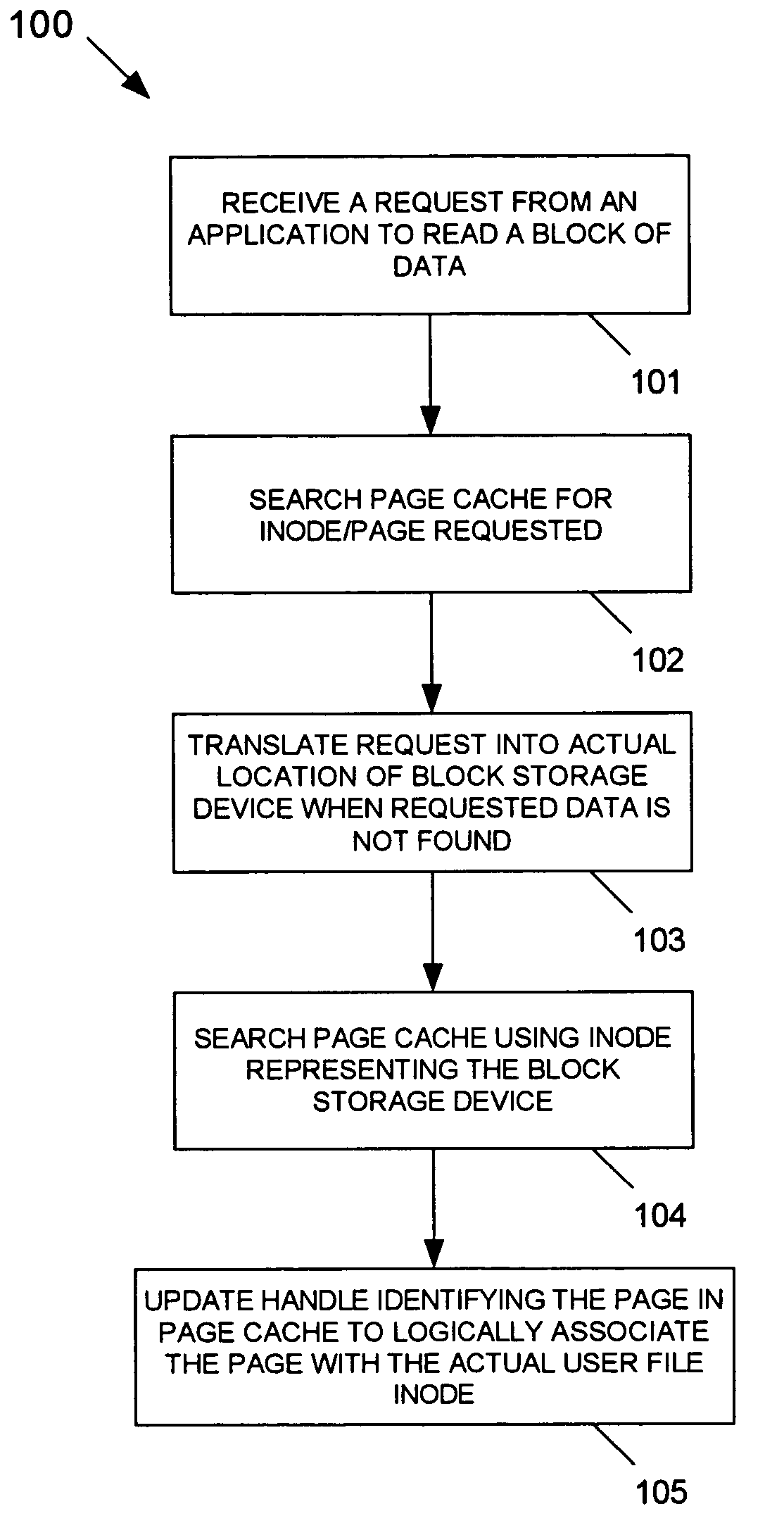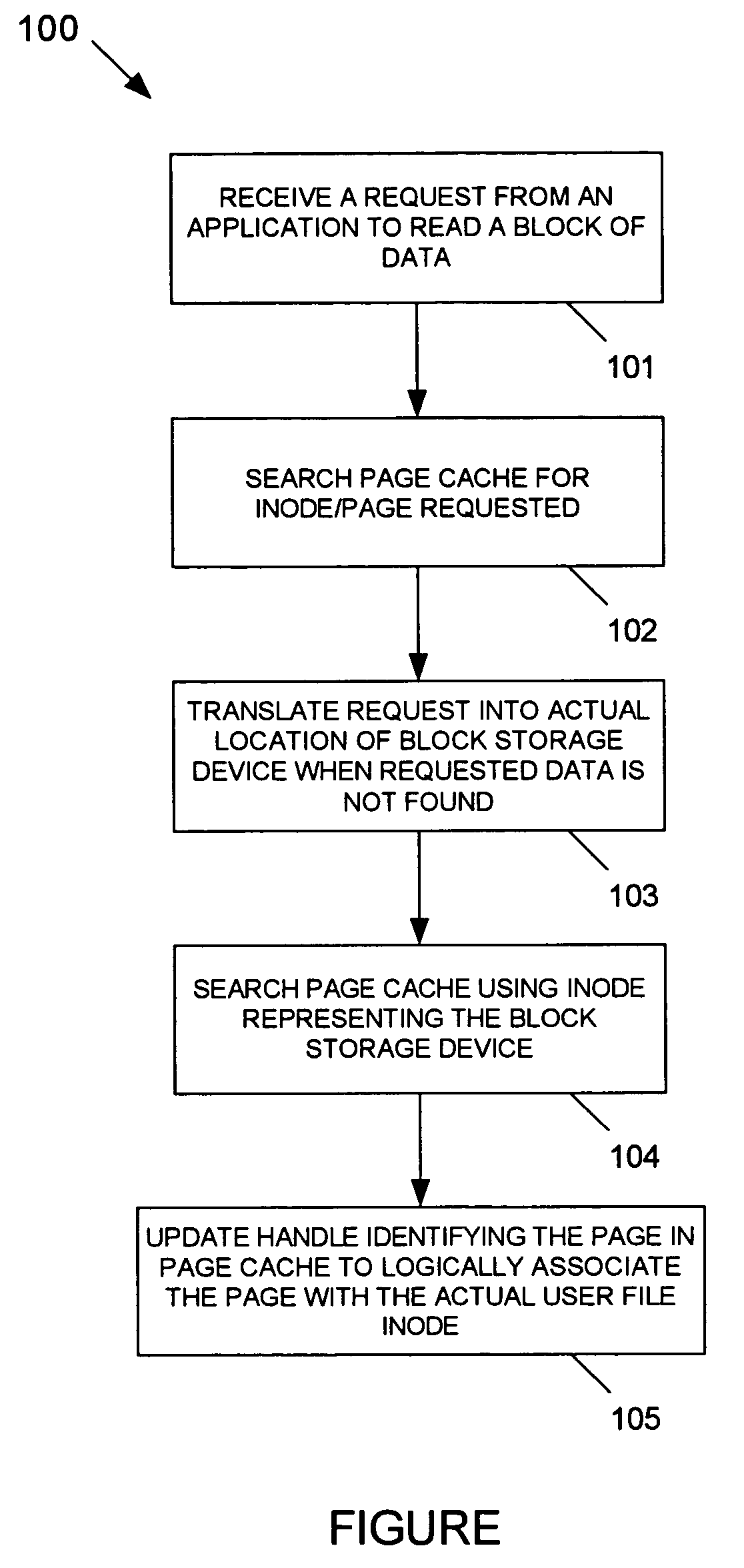Multi-level page cache for enhanced file system performance via read ahead
a file system and page cache technology, applied in the field of read-ahead caching, can solve the problems of reducing the efficiency of data eviction, affecting the performance of file system, and requiring heuristics, so as to increase the effectiveness of read-ahead caching
- Summary
- Abstract
- Description
- Claims
- Application Information
AI Technical Summary
Benefits of technology
Problems solved by technology
Method used
Image
Examples
Embodiment Construction
[0013]The present invention increases the effectiveness of read-ahead caching at the system level by efficiently implementing a physical read ahead that uses a two-level page cache. The present invention is particularly useful in view of the increasing tendency to consider disk-drive-based storage as being more sequential than random in nature and, thus, the trend toward write anywhere or log-structured filing systems.
[0014]Most operating systems use a page cache that stores blocks of data that have been read from or written to a disk. The pages in the cache are usually addressed via the file they are in, specified by, for example, an inode number that identifies the file store on the storage device and a page number within that file. As used herein, the term “inode number” means a unique number or pointer that is used by a file system to identify a file and the pages in the page cache containing data from the file. To read any data into the page cache, the data must be associated w...
PUM
 Login to View More
Login to View More Abstract
Description
Claims
Application Information
 Login to View More
Login to View More - R&D
- Intellectual Property
- Life Sciences
- Materials
- Tech Scout
- Unparalleled Data Quality
- Higher Quality Content
- 60% Fewer Hallucinations
Browse by: Latest US Patents, China's latest patents, Technical Efficacy Thesaurus, Application Domain, Technology Topic, Popular Technical Reports.
© 2025 PatSnap. All rights reserved.Legal|Privacy policy|Modern Slavery Act Transparency Statement|Sitemap|About US| Contact US: help@patsnap.com


